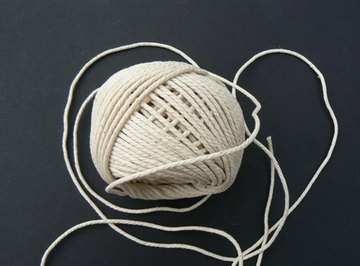
Density is perhaps most commonly understood as the property calculated by dividing a substance's mass by its volume. But there are other kinds of density, too. String, for example, displays "linear density," a property which reflects its mass per unit length, one you can later use to determine a string's propensity to transport wave vibrations. With this in mind, calculating the linear density of string is as simple as measuring both its mass and its length and performing some simple divisions.
- Electronic balance
- Ruler
- Calculator
Weigh your string using an electronic balance. Set the string onto the balance and record its mass in grams. To convert this mass to kilograms, divide it by 1,000: a mass of 2.5 g, for example, would be 2.5/1000, or 0.0025 kg.
Measure your string using a ruler or meter stick, and convert its length in centimeters to meters, if you use the former unit to measure. Your 0.0025 kg string, for example, might have a length of 43 cm -- in other words, 43/100 or 0.43 m.
Divide the mass of the string by its length to get linear density in kilograms per meter. For the example string that weighs 0.0025 kg and is 0.43 m long, perform this operation as follows: 0.0025/0.43 = 0.00582 kg/m.
Things You'll Need
References
About the Author
Robert Schrader is a writer, photographer, world traveler and creator of the award-winning blog Leave Your Daily Hell. When he's not out globetrotting, you can find him in beautiful Austin, TX, where he lives with his partner.
Photo Credits
string image by Alison Bowden from Fotolia.com
